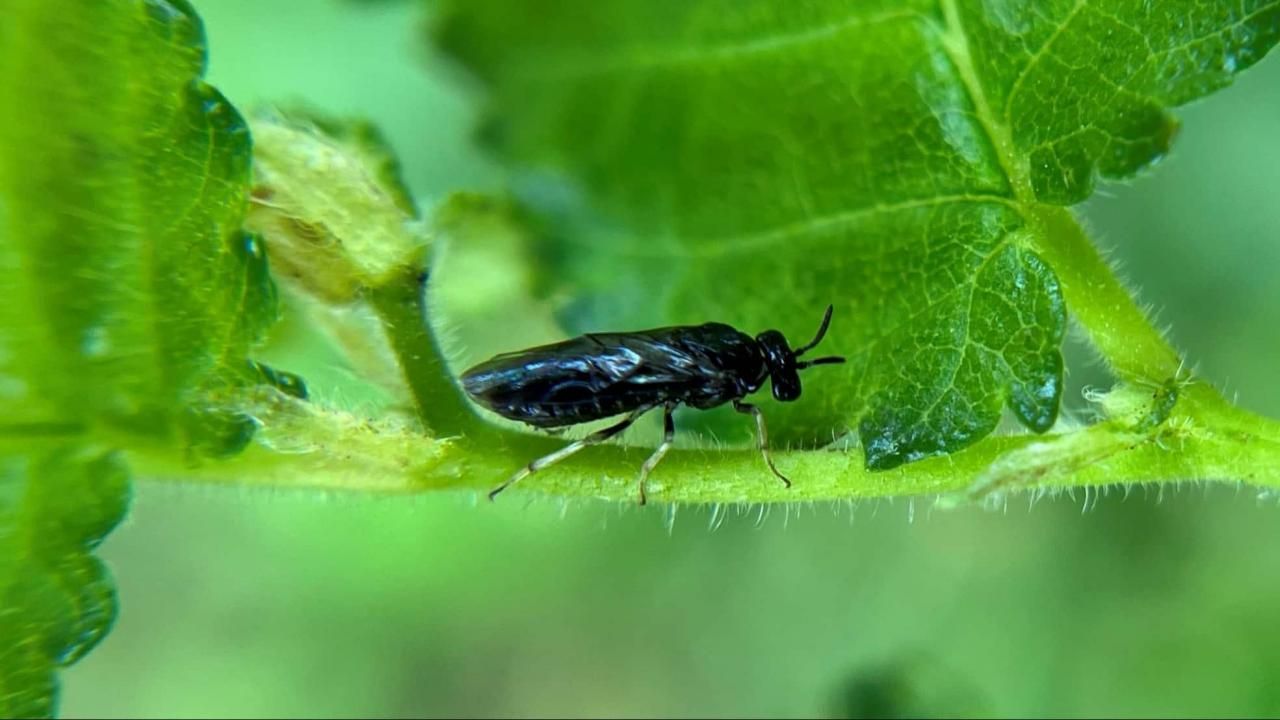New insect, invasive to NC, chews zigzag pattern into elm leaves

North Carolina has a new insect resident, one that poses a unique risk to elm trees.
The elm zigzag sawfly (Aproceros leucopoda Takeuchi) was first detected in the United States for the first time in Virginia in 2021. By 2022, elm zigzag sawflies had spread to North Carolina, Pennsylvania, Maryland and New York.
Kelly Oten, assistant professor of forest health at North Carolina State University, explains that the elm zigzag sawfly feeds on the leaves of elm trees, creating a zigzag pattern, thus the name.
Because the species is so new to North Carolina, it's not yet clear what the long-term impact will be on the state's millions of elm trees. In a paper written for the Journal of Integrated Pest Management, Oten wrote, "Long-term health impacts to host trees are unknown, though aesthetic damage, growth loss, and branch dieback occur in Europe where it is also invasive."
Oten told N.C State's The Abstract that the elm zigzag sawfly has only been identified in one location in North Carolina so far.
"A homeowner in North Carolina called the N.C. Forest Service because their large, mature American elm trees were severely defoliated," she said. "We found thousands of sawflies, and trees nearly completely defoliated.

"It’s too early to tell right now how damaging elm zigzag sawfly will be to elms. The majority of trees have very minor defoliation. You probably wouldn’t even know something was happening to the tree until you got up close," she said.
There is the chance, though, that the sawflies can weaken a tree enough to kill it over time. It will take time to gather that information.
Those who spot the zigzag pattern on their trees are asked to report it to their county extension agent or the N.C. Forest Service.










